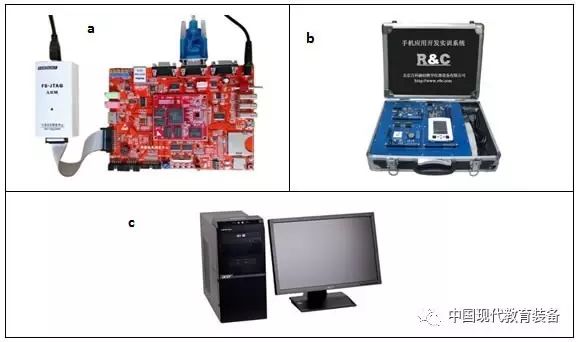Authors: Wu Lifeng, Zhang Yaping
Originally published in “Modern Education Equipment” magazine, 2017, Issue 13
The Fifth Plenary Session of the 18th Central Committee proposed: “To adhere to innovative development, we must place innovation at the core of national development.” Undoubtedly, innovation is the foundation of any country’s development. As higher education institutions, cultivating innovative talents is a primary goal of university education. Strengthening the cultivation of independent innovation capabilities among innovative talents is an important task for universities today. How to cultivate college students’ innovative abilities has become a key research topic in various universities. The cultivation of innovative abilities is a complex project that requires drawing on effective training models from both domestic and international contexts, and must be tailored to the characteristics of the school, discipline, and students. Scholars at home and abroad have conducted beneficial discussions and practices in areas such as educational systems, curriculum design, competitions, and project participation, achieving certain results. However, the current cultivation models are still not perfect. If we can use comprehensive and practical courses as breakthroughs for innovation training, it would be of practical significance.
Embedded systems are a highly applied course centered around “application”; it is a comprehensive course that requires a foundation in simulated electronic technology, digital electronic technology, C language, assembly language, signal systems, and other subjects; it is also a highly practical course, as embedded systems are a product of the integration of hardware and software, requiring hands-on operation to truly understand their interconnections. Given the application, comprehensiveness, and practicality of this course, relying on the embedded systems experimental platform can integrate the foundational courses that students have learned previously, driven by practical projects, effectively cultivating students’ engineering innovation practice abilities.
Embedded Systems Platform
Capital Normal University offers basic courses in embedded systems and basic experiments in embedded systems for students majoring in information engineering and electronic information engineering, guided by the philosophy of “strengthening fundamentals, emphasizing practice, cultivating abilities, and highlighting innovation.” To better connect theory with practice, we have focused on building the embedded systems experimental platform. Each experimental platform consists of two development boards and a PC (as shown in Figure 1). Figure 1a shows the FS4412 development board, which connects to the host computer via a simulator (as shown in Figure 1c). Figure 1b is the smartphone experimental and training development platform. We carry out experimental teaching based on this platform while cultivating students’ innovative practical abilities.

Figure 1 Embedded Systems Experimental Platform
Fostering College Students’ Innovative Awareness
Innovation first requires an innovative awareness. Innovative awareness refers to the motivation that drives individuals to create unprecedented things or ideas based on the needs of social and individual life development, as well as the intention, desire, and ideas expressed in the creative activities. Therefore, the first step is to address how to help students understand innovative awareness and consciously cultivate their self-innovative awareness.
● Let students deeply understand the importance of innovation
The embedded systems platform centers around ARM, which designs but does not manufacture chips; it earns substantial profits by selling IP (Intellectual Property cores). Most of the mobile phones and electronic products we use are based on ARM technology. Innovation not only leads to profit but also improves people’s living standards. Therefore, we focus on teaching domestic and international patents, combined with the emphasis major companies such as Huawei, Microsoft, Samsung, and Apple place on innovation, allowing students to consult relevant materials and truly recognize that innovation is the foundation of development and the essence of economic growth. We also compare imitation and innovation, helping students understand that innovation is the foundation for national development.
● Innovation is everywhere
Today, technology is advancing rapidly, with many innovations such as 3D printing, drones, robots, and virtual reality all based on embedded technology. Relying on the embedded systems platform, students can also engage in various innovative activities. Moreover, innovation comes in all sizes; whether it’s a mouse, scroll wheel, optical, laser, wireless, or Bluetooth technology, each innovation has improved practicality and convenience. We help students realize that innovation is around them, and they can utilize the knowledge they possess; as long as they think critically, new ideas can arise.
● Stimulating innovative awareness
To effectively stimulate students’ innovative awareness and enhance their enthusiasm for innovation, we employ brainstorming techniques. We first present a real application scenario and then ask students to design a solution using an embedded system. Practice has proven that this method significantly boosts students’ enthusiasm and expands their thinking space.
Fostering College Students’ Innovative Practical Abilities
Given that the embedded systems experimental platform has multiple verification experiments, we first arrange for students to complete all verification experiments in the shortest time possible. This allows each student to familiarize themselves with the experimental platform while also recording any issues encountered during the process. Then, students are paired in groups of two, and each group designs a comprehensive experimental plan based on the experimental platform. This requires students to consult cutting-edge technical literature, investigate actual market demands, and provide a design topic based on the experimental platform. Each group must clearly explain the project background and provide a complete design plan. The teacher acts as a guide, responsible for analyzing the feasibility of each plan and offering further suggestions. After a few weeks, students begin to truly research and develop their projects; with clear objectives and mutual encouragement among groups, progress is generally good.
The development of information technology has made mobile phones a necessity, and APP software has greatly enhanced convenience in people’s lives. Students are also enthusiastic about APP software development; therefore, we set development requirements on the smartphone experimental and training development platform, such as creating a “School Information APP” to help students stay updated on school information, facilitating their daily living and study arrangements, allowing them to check classroom usage in real-time, and receive notifications about academic reports. Similar APPs are practical, and developing such projects provides students with a sense of achievement while genuinely mastering embedded systems technology. By applying what they learn, students’ innovative abilities are enhanced.
Evaluating College Students’ Innovative Abilities
Innovative ability is reflected in multiple aspects, and utilizing the embedded systems experimental platform can enhance students’ innovative abilities from various angles. However, how to evaluate students’ innovative abilities is a necessary consideration. Based on the embedded systems experiments, we comprehensively assess innovative abilities from four aspects: innovative awareness, learning ability, practical ability, and research ability.
The evaluation of innovative awareness is based on students’ performance, such as the ideas, opinions, and thoughts proposed during brainstorming sessions, and whether they can present effective ideas.
The evaluation of learning ability primarily focuses on the entire project completion process, examining whether students can consult materials and learn relevant knowledge to solve practical problems based on project needs. For example, in a temperature control system, if a temperature sensor is needed, and there are different types of temperature sensors, can students choose the appropriate one and understand the concepts, types, characteristics, and parameters of the sensors during the experiment?
The evaluation of practical ability mainly considers the wiring connections, circuit layouts, and the correct use of various auxiliary experimental instruments such as oscilloscopes, signal generators, and power supplies during the project.
Research ability is measured by the project’s outcomes, such as published papers, invention patents, software copyrights, and defense PPTs. Whether a paper or patent can be formed from the entire project reflects research ability. Additionally, the ability to clearly explain the project’s background, significance, plan, and results during the defense also reflects research ability.
We rely on the embedded systems platform to comprehensively evaluate students’ innovative abilities from the above four aspects, assigning a weight to each item. We also conduct assessments through two approaches: first, a longitudinal measurement, comparing each student’s situation at the beginning and end of the project; second, a horizontal measurement, comparing innovative abilities among different groups. Finally, we comprehensively evaluate the improvement in innovative abilities among the entire class throughout this process.
